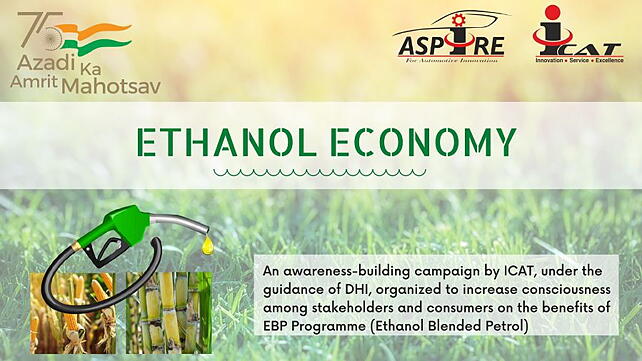
With the government putting thrust on increasing the blend of ethanol in automobile fuel, the ethanol consumption in India is set to increase to about 1,000 crore litres by 2025 from the current consumption of 300 crore litre, a panel of experts said in a webinar organised by ICAT on ‘Ethanol Economy’.
India’s current ethanol blending target is 8.5% and is set to increase to 10% by fiscal 2021-22, which can be achieved through the concerted efforts of oil trading companies and various state governments.
The Indian government expects investments of up to INR 41,000 crore to help India meet its ethanol blending target of 10% by 2022 and 20% by 2025, reducing reliance on expensive oil imports.
ICAT organised a two-day webinar from 16th-17th August 2021 on ‘Ethanol Economy’ through its technology platform of ASPIRE on the “Report of the Expert Committee on Road Map for ethanol blending in India 2020-2025,” released by the Prime Minister of India.
During the course of the discussion, it was found that one of the primary reasons for the adoption of Ethanol blended fuels is the reduction of emission and decarbonisation.
Dr Reiji Mathai, Director, Automotive Research Association of India (ARAI), stated that by 2023 some places in India will be selling 20% blended ethanol, and by 2025 it will be available all across India.
C V Raman, Senior Executive Director (Eng), Maruti Suzuki India, and President, ASPIRE Governing Board, presented that fuels mixed with ethanol can replace 18% of gasoline consumption. E20 fuels will also reduce harmful greenhouse gases by 16%. However, it has been observed that increasing the mix would also increase fuel consumption and higher maintenance costs of vehicles.
Other challenges include vehicle performance compatibility for ethanol-blended petrol, pricing, storage, engine reliability issues, inconsistency in character of ethanol-blended petrol from various biosources, requirement of consistency in policy across all aspects and so on.
Raman also mentioned that there is a need to recognise ethanol as a carbon-neutral fuel and mentioned that RON 95 fuels should be the standard for all ethanol-blended fuels from E20 to E85/E100.
Vikram Kasbekar, ED & CTO, Hero MotoCorp, suggested that E10 be the base fuel for a certain period to compensate customers for the loss of fuel economy.
The panel discussion on ‘Challenges for Auto Industries of Ethanol Blended Fuel (EBF) Policy’ discussed that awareness building is a crucial aspect for the success of EBP in India, and all stakeholders must work on spreading as much knowledge about EBP as possible.
Talking of the blending ethanol and the 2W scenario in India, Sourabh Banerjee, General Manager (Operations), IOCL, presented the phased implementation plan for enhancing ethanol production to reach the target of E10 across the country by 2022 and E20 by 2025.
It was also noted that there is a need to develop sustainable energy solutions for transportation for the objective of energy independence.